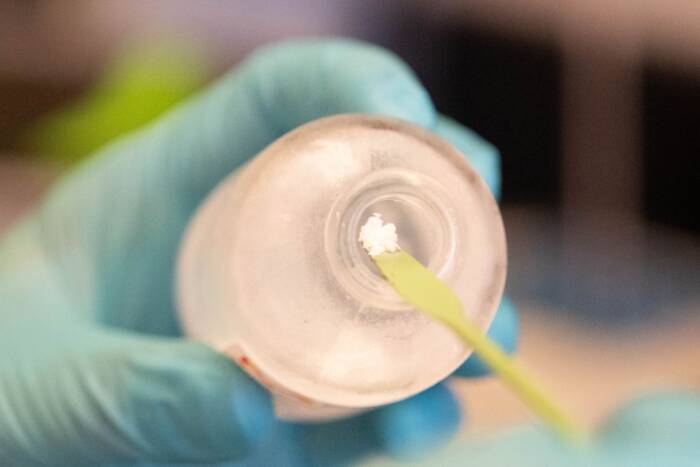Sarah Van Driesche
 Sarah Van Driesche
Sarah Van Driesche
Presented by Robert B. Darnell on behalf of himself and Jennifer C. Darnell
B.A., Wellesley College
Mechanism of Translational Control by the Fragile X Mental Retardation Protein and Creation of the FMRP cTAG Mouse
Sarah Van Driesche came to The Rockefeller University as an athlete and a scientist, and managed to score an amazing goal during her time in our lab.
Sarah is one of the most ingenuous, careful and committed scientists we have seen in the laboratory. She came here from Wellesley College, with high grades, great GREs, a perfect 900 on her Biology Advanced Subject test and the Fiske Prize in Biology. The latter was for a series of lab projects she did, progressing from interests in anatomy and physiology to more detailed functional analyses at the molecular level. In fact, she herself described her view of the beauty of cellular machinery at the time as “intricate, eloquent, biologically cool as if inspired by Rube Goldberg and Dr. Seuss together.” Her mentors described her in terms that were a bit more conventional but no less praiseworthy, for example, as “a gem, with the best hands I have ever seen.”
Sarah’s work was characterized by extreme focus and attention to detail. This can be seen in perusing back over her original thesis proposal, in which she planned to validate FMRP target transcripts by CLIP, and analyze them in specific cell types. This is exactly what she did, which is essentially unheard of! It may sound sensible, but nearly no student actually makes a plan and sticks to it over the years. In Sarah’s case, she did so with a wisdom that produced, with her co-thesis advisor and mentor Jennifer Darnell, what I consider one of the most important discoveries our laboratory has made.
To explain very briefly … the commonest form of inherited intellectual disability, often coupled with autism, is the fragile X syndrome. As opposed to most such difficulties in childhood, the genetic cause of this has been known for over 20 years. A sobering reminder of how hard science is, in all that time no clear understanding of what the fragile X protein did, its relationship to autism or hence a logical window into how to approach these problems clinically had been established. Sarah and Jen worked side by side to execute a breakthrough piece of work. They identified what the protein did for the first time — it bound to specific RNA molecules and regulated their ability to be translated by ribosomes. Sarah deserves the highest of gold stars for sticking with an enormously difficult experimental problem, showing that the fragile X protein blocked translation by forcing the translating ribosomes to stop in their tracks. This work, published in Cell, has provided the gold standard for our understanding of how the protein works and offers great insights into possible treatments. Moreover, it led to an exciting and unexpected explanation for the link between the fragile X syndrome and autism and, most recently, is giving insights, amazingly, into schizophrenia. All of these avenues are being pursued by our laboratory and others, and provide a testimony to the extremely special nature of Sarah’s thesis work. Both Rube Goldberg and Dr. Seuss would be proud, as I know her whole family is, and most certainly as our whole laboratory is.
Finally, not that this is a prerequisite for graduating from our lab, but Sarah also has produced, in addition to a beautiful thesis during her time here, a beautiful little girl.


